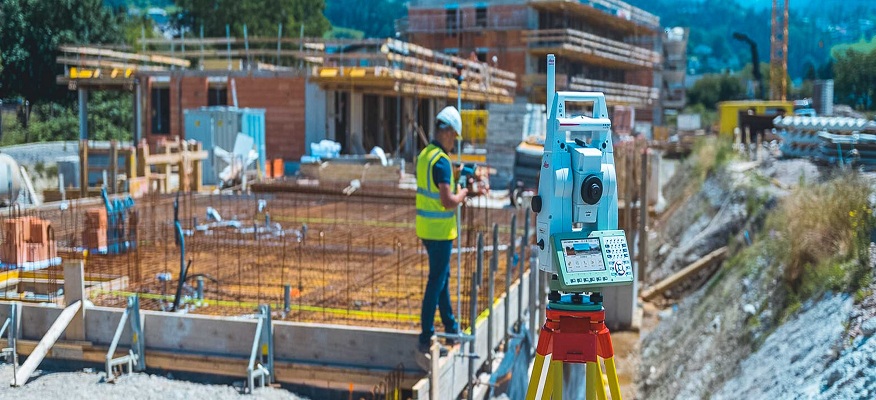In the realm of road construction, the prowess of land surveyors in creating accurate and interactive 3D site modeling stands paramount. Their expertise transforms intricate topographical data into elaborate 3D models, offering profound insights into the terrain. The models are indispensable for visualizing road alignments, gradients, and potential landscape challenges.
Experienced land surveyors ensure safety and efficiency through accurate data collection, precise mapping, simulation, and optimization, guiding the construction process meticulously. Ultimately, 3D site models emerge as the linchpin, offering precision, optimized design, and streamlined construction for superior outcomes. The article explores the role of 3D site models in enhancing road construction design, planning, and streamlined execution.
1. Detailed Visualization for Road Alignment
3D site models by experienced surveyors provide intricate visual representations crucial for road construction. Clear 3D site visualizations offer comprehensive insights into road alignments, gradients, and landscape challenges. They enable precise design adjustments and proactive measures to tackle potential issues, guiding informed decision-making during construction.
The 3d site modeling boise visuals act as blueprints, ensuring road alignment integrates with the natural terrain. They aid in the layout and positioning of a road or highway, foreseeing landscape challenges, and enhancing planning precision. Ultimately, these models empower engineers and construction teams, enabling safer, more efficient road infrastructure through meticulous visualization and proactive problem-solving.
2. Identifying and Navigating Challenges
In road and highway construction, 3D site modeling acts as a visionary compass, unveiling the intricacies embedded within the terrain. These models provide a comprehensive preview, highlighting potential challenges such as steep slopes, curves, or environmental limitations even before construction commences.
The proactive insight equips engineers to fine-tune road alignments, ensuring a harmonious fit with the landscape. Mapping these challenges optimizes resource allocation, minimizes risks, and fosters cost-efficient and timely construction. Ultimately, 3D site models facilitatethis proactive strategy, guaranteeing smoother navigation through terrain intricacies, resulting in safer and more efficient road and highway projects.
3. Dynamic Utility Mapping
Experienced land surveyors are pivotal in mapping surface and subsurface utilities for road construction. Experienced land surveyors detect and chart underground utilities by employing technologies like Ground Penetrating Radar (GPR) and electromagnetic locators, ensuring accurate tracking and relocation during construction. The meticulous mapping prevents personal injuries and accidental damage to existing utilities, facilitating their secure relocation and efficient integration into new road infrastructure.
By integrating utility data into 3D models, surveyors visualize their original positions and monitor changes, aiding in proactive planning and coordination with utility providers. While 3D modeling illustrates these shifts, real-time updates often necessitate concurrent surveying and mapping efforts during construction.
4. Enhanced Road Construction Safety Measures
The integration of 3D site modeling by adept land surveyors bolsters safety measures in road construction by proactively identifying and addressing potential hazards. The models meticulously pinpoint risks, from terrain variations to crucial rock formations and dangerous subsurface obstructions, fostering informed planning for enhanced safety protocols.
Detailed visualizations enable the implementation of safety features such as proper signage, secure guardrails, and strategically placed drainage systems. Also, these models simulate construction sequences, optimizing methodologies for safer practices, bolstering worker training, and cultivating a safety-centric culture on-site. This amalgamation of advanced technology and spatial comprehension via 3D site modeling facilitates a safer environment, prioritizing enhanced safety standards and minimizing risks in construction endeavors.
5. Enhancing Impact Analysis
3D site modeling is instrumental in strengthening impact analysis for road construction. These models offer a holistic terrain view, enabling meticulous evaluations of design modifications. By simulating alterations, they unveil environmental impacts, traffic adjustments, and safety considerations. A comprehensive analysis evaluatesthe effects on utilities, timelines, and project costs.
Leveraging 3D models allows for a deeper understanding of environmental and safety implications and their financial repercussions. Through simulations, construction teams assess cost implications, ensuring design changes align with efficiency, sustainability, and economic feasibility within the project’s budgetary confines.
Embrace 3D Site Modeling for Precision Road Construction Design and Development
Harnessing the capabilities of 3D site modeling revolutionizes road design, planning, and impact analysis, ensuring safer, more efficient construction. A reliable and experienced land surveyor proficient in this technology becomes pivotal for accurate, cost-effective solutions prioritizing safety and sustainability. Their expertise ensures precise road infrastructure and adds substantial value to projects by optimizing resources and delivering exceptional outcomes, making every investment count.

